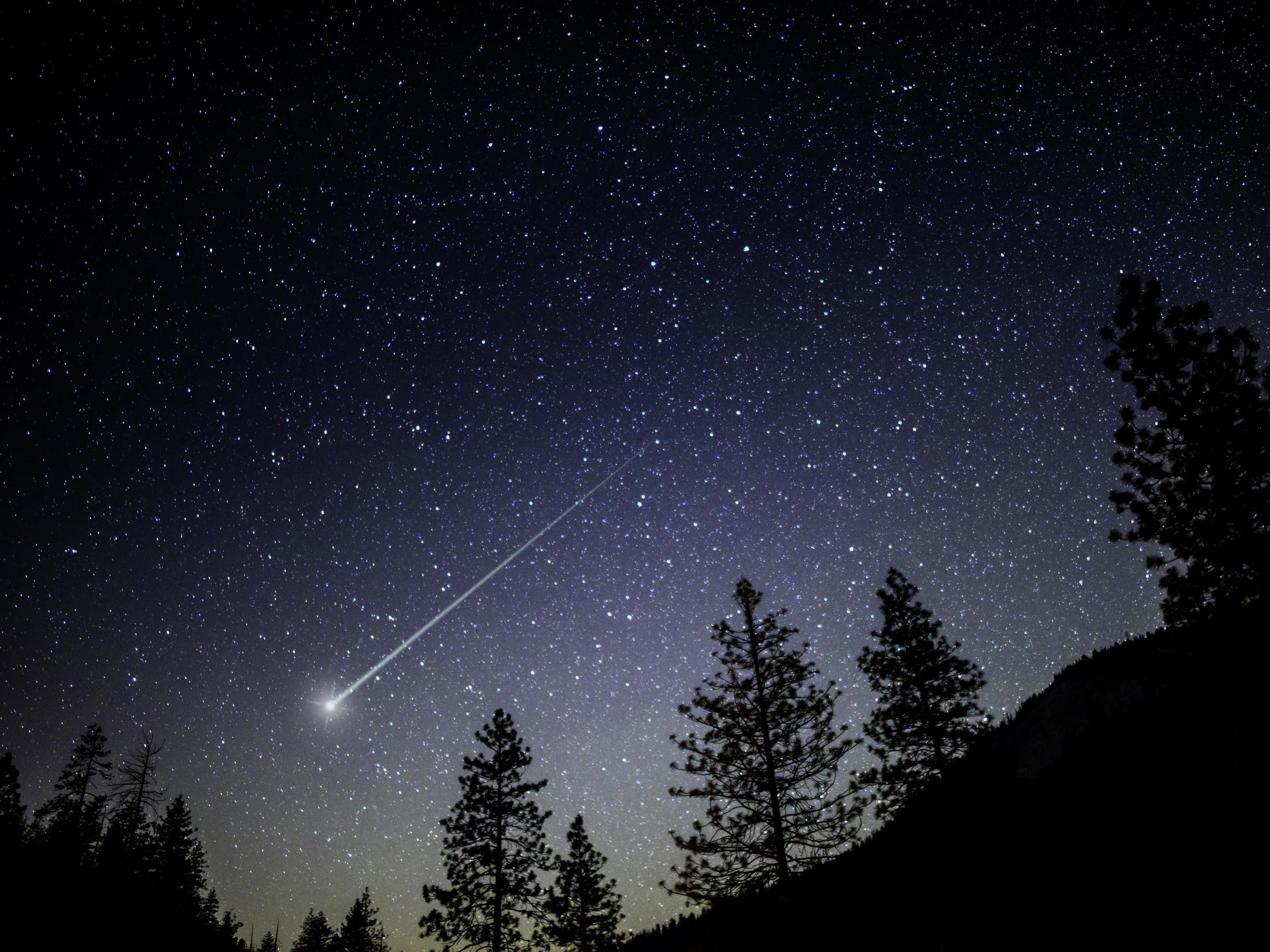Meteor shower set to light up skies above UK tonight
Best viewing is after midnight and before dawn in area free from light pollution and cloud cover

A meteor shower is set to light up the sky tonight with up to 20 shooting stars visible per hour.
The spectacular Delta Aquariids display is best seen from the southern hemisphere but will also be visible in the UK far away from light pollution.
The meteors are believed to be caused when our planet crosses the orbital path of Comet 96P/Machholz.
Dust coming off the comet smashes into our atmosphere and lights up, giving the effect of what looks like shooting stars. The display peaks on the 28 to 29 July but is active from 12 July to 23 August.
Around five to ten per cent of Aquariid meteors leave trails of light lasting a couple seconds. The meteors originate from a point in the constellation Aquarius and burn in the upper atmosphere around 60 miles above Earth, while travelling at 90,000 miles per hour.
In pictures: Perseids meteor shower lights up sky around the world
Show all 17They vaporise into shooting stars, according to EarthSky.
From any time zone, the best viewing time is after midnight and before dawn.
In order to see them, head somewhere as free from cloud and light as possible. Check the cloud forecast for the local area and pick a time when it’s going to be clear.
Nasa encourages people to lie flat on their back and give their eyes 30 minutes to adjust to have the best chance of seeing the show.
If there are some clouds, viewers may still see something as the stars shoot across a large part of the sky. However, if the cloud cover is complete it might not be possible to see anything.
The next meteor shower is the Perseids which peaks on 11 August.
According to the American Meteor Society (AMS), Perseids is the most popular because the weather is warm so people are more likely to go outside.
“They reach a strong maximum on August 12 or 13, depending on the year. Normal rates seen from rural locations range from 50-75 shower members per hour at maximum,” according to the AMS website.
Subscribe to Independent Premium to bookmark this article
Want to bookmark your favourite articles and stories to read or reference later? Start your Independent Premium subscription today.

Join our commenting forum
Join thought-provoking conversations, follow other Independent readers and see their replies